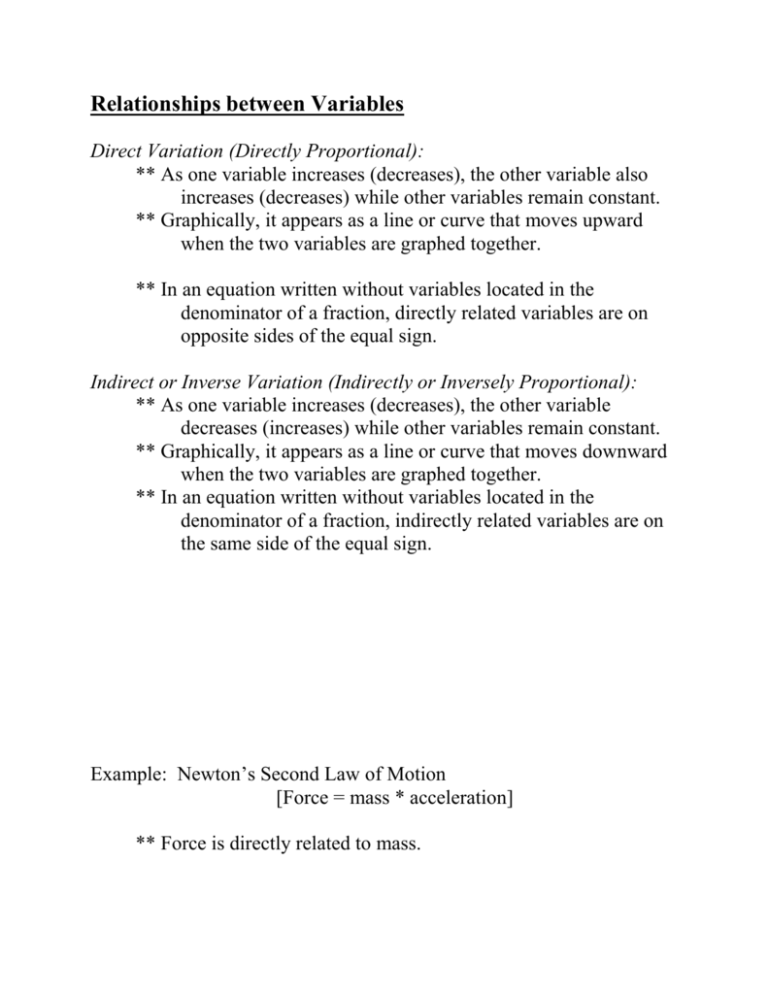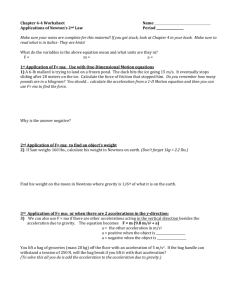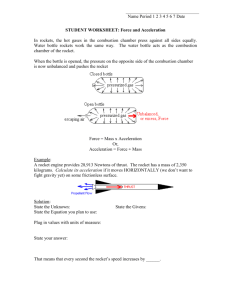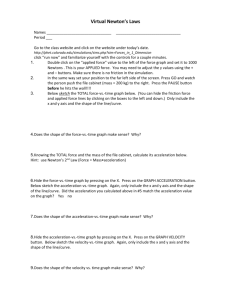Relationships between Variables
advertisement

Relationships between Variables Direct Variation (Directly Proportional): ** As one variable increases (decreases), the other variable also increases (decreases) while other variables remain constant. ** Graphically, it appears as a line or curve that moves upward when the two variables are graphed together. ** In an equation written without variables located in the denominator of a fraction, directly related variables are on opposite sides of the equal sign. Indirect or Inverse Variation (Indirectly or Inversely Proportional): ** As one variable increases (decreases), the other variable decreases (increases) while other variables remain constant. ** Graphically, it appears as a line or curve that moves downward when the two variables are graphed together. ** In an equation written without variables located in the denominator of a fraction, indirectly related variables are on the same side of the equal sign. Example: Newton’s Second Law of Motion [Force = mass * acceleration] ** Force is directly related to mass. Force vs. Mass 35 Force (Newtons) 30 25 20 15 10 5 0 0 2 4 6 8 10 Mass (kilograms) ** Force is directly related to acceleration. Force vs. Acceleration 25 Force (Newtons) 20 15 10 5 0 0 2 4 6 8 Acceleration (meters per second squared) 10 12 ** Acceleration and mass are inversely (indirectly) related. Mass vs. Acceleration 25 Mass (Kilograms) 20 15 10 5 0 0 2 4 6 8 Acceleration (Meters per second squared) 10 12









